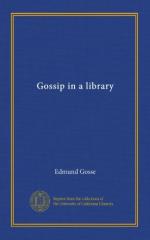Anne Finch, Countess of Winchilsea, is not a commanding figure in history, but she is an isolated and a well-defined one. She is what one of the precursors of Shakespeare calls “a diminutive excelsitude.” She was entirely out of sympathy with her age, and her talent was hampered and suppressed by her conditions. She was the solitary writer of actively developed romantic tastes between Marvell and Gray, and she was not strong enough to create an atmosphere for herself within the vacuum in which she languished. The facts of her life are extremely scanty, although they may now be considerably augmented by the help of my folio. She was born about 1660, the daughter of a Hampshire baronet. She was maid of honour to Mary of Modena, Duchess of York, and at Court she met Heneage Finch, who was gentleman of the bed-chamber to the Duke. They married in 1685, probably on the occasion of the enthronement of their master and mistress, and when the crash came in 1688, they fled together to the retirement of Eastwell Park. They inhabited this mansion for the rest of their lives, although it was not until the death of his nephew, in 1712, that Heneage Finch became fourth Earl of Winchilsea. In 1713 Anne was at last persuaded to publish a selection of her poems, and in 1720 she died. The Earl survived her until 1726.
My manuscript was written, I think, in or about the year 1696—that is to say, when Mrs. Finch was in retirement from the Court. She has adopted the habit of writing,
Betrayed by solitude to try
Amusements, which the prosperous fly.
But her exile from the world gives her no disquietude. It seems almost an answer to her prayer. Years before, when she was at the centre of fashion in the Court of James II., she had written in an epistle to the Countess of Thanet:




